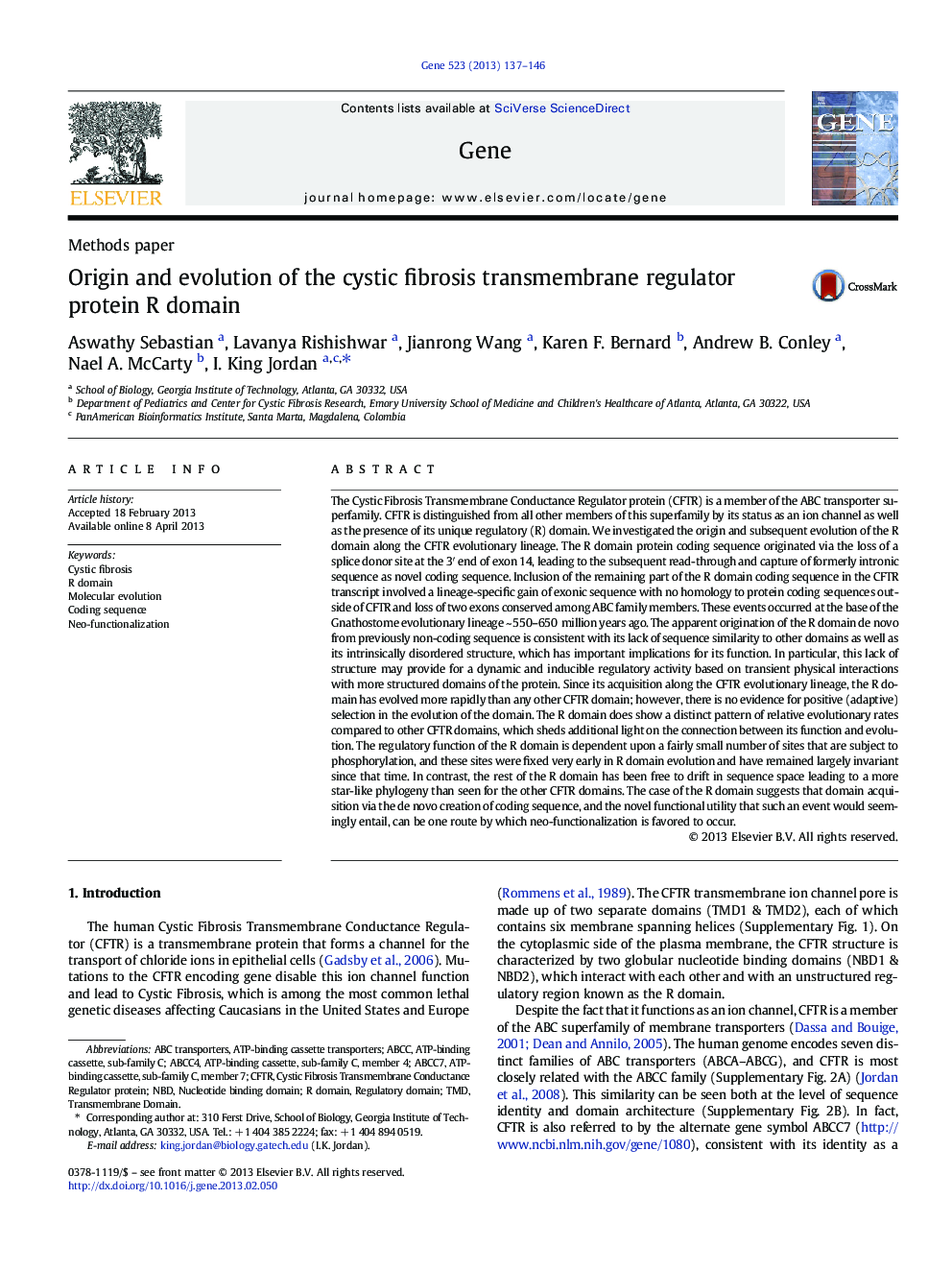| کد مقاله | کد نشریه | سال انتشار | مقاله انگلیسی | نسخه تمام متن |
|---|---|---|---|---|
| 5906545 | 1159974 | 2013 | 10 صفحه PDF | دانلود رایگان |

- The CFTR protein is distinguished by the presence of the regulatory R domain.
- We evaluated the origin and evolution of the CFTR R domain.
- The R domain emerged 550-650Â million years ago at the base of the Gnathostome lineage.
- The R domain originated via the exonization of formerly non-coding intronic sequence.
- The R domain shows distinct patterns of site-specific evolution and selection.
The Cystic Fibrosis Transmembrane Conductance Regulator protein (CFTR) is a member of the ABC transporter superfamily. CFTR is distinguished from all other members of this superfamily by its status as an ion channel as well as the presence of its unique regulatory (R) domain. We investigated the origin and subsequent evolution of the R domain along the CFTR evolutionary lineage. The R domain protein coding sequence originated via the loss of a splice donor site at the 3â² end of exon 14, leading to the subsequent read-through and capture of formerly intronic sequence as novel coding sequence. Inclusion of the remaining part of the R domain coding sequence in the CFTR transcript involved a lineage-specific gain of exonic sequence with no homology to protein coding sequences outside of CFTR and loss of two exons conserved among ABC family members. These events occurred at the base of the Gnathostome evolutionary lineage ~Â 550-650Â million years ago. The apparent origination of the R domain de novo from previously non-coding sequence is consistent with its lack of sequence similarity to other domains as well as its intrinsically disordered structure, which has important implications for its function. In particular, this lack of structure may provide for a dynamic and inducible regulatory activity based on transient physical interactions with more structured domains of the protein. Since its acquisition along the CFTR evolutionary lineage, the R domain has evolved more rapidly than any other CFTR domain; however, there is no evidence for positive (adaptive) selection in the evolution of the domain. The R domain does show a distinct pattern of relative evolutionary rates compared to other CFTR domains, which sheds additional light on the connection between its function and evolution. The regulatory function of the R domain is dependent upon a fairly small number of sites that are subject to phosphorylation, and these sites were fixed very early in R domain evolution and have remained largely invariant since that time. In contrast, the rest of the R domain has been free to drift in sequence space leading to a more star-like phylogeny than seen for the other CFTR domains. The case of the R domain suggests that domain acquisition via the de novo creation of coding sequence, and the novel functional utility that such an event would seemingly entail, can be one route by which neo-functionalization is favored to occur.
Journal: Gene - Volume 523, Issue 2, 10 July 2013, Pages 137-146